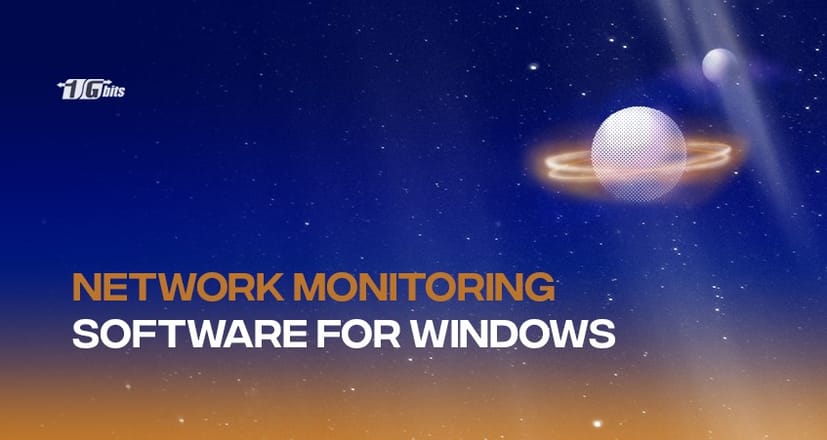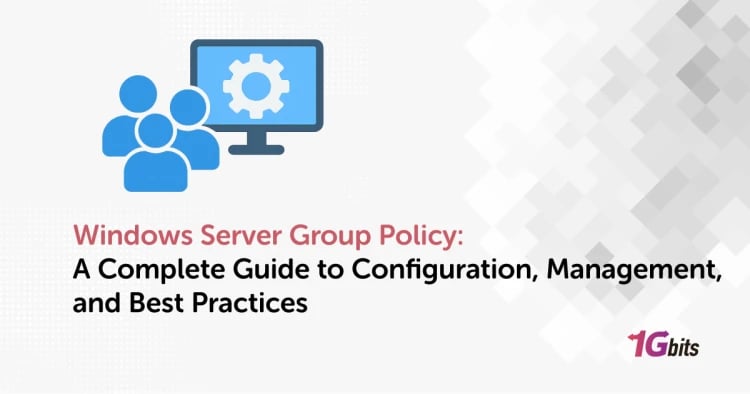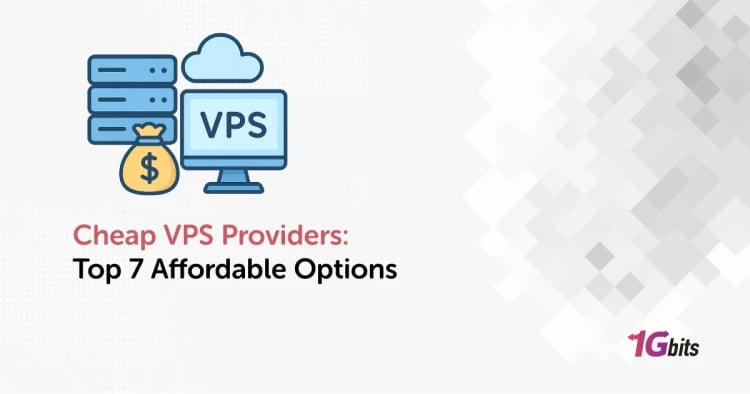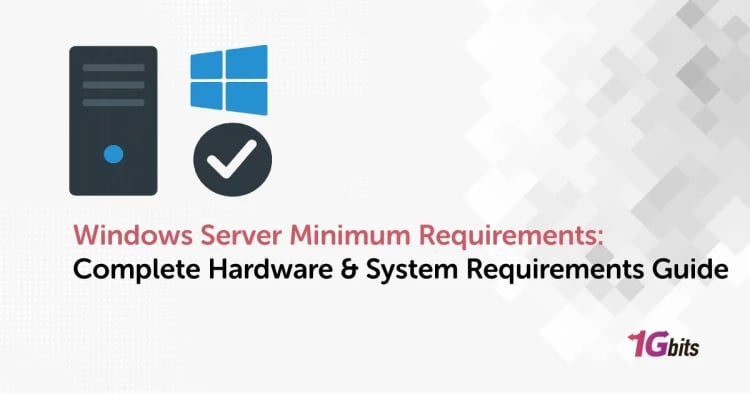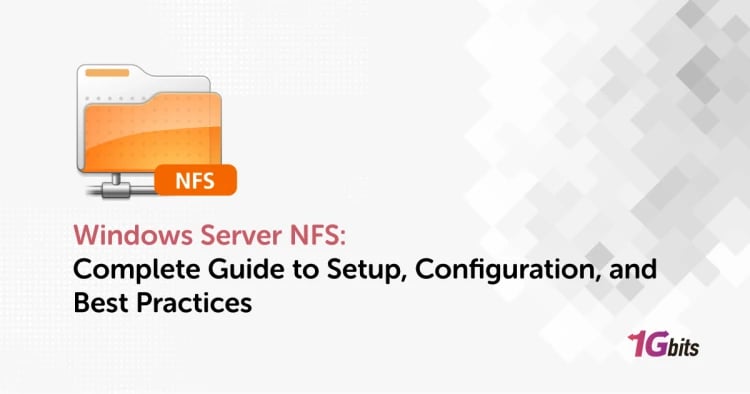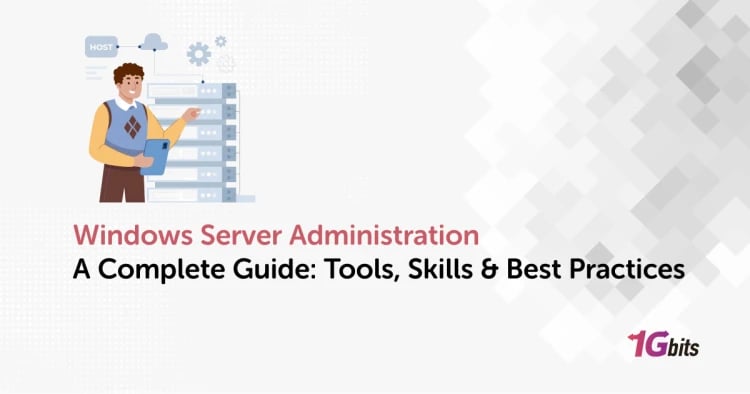Today, every company works within networks, either public or private. Data are being shared between the devices that are connected over the network. Sometimes, companies face network performance issues while handling the incoming and outgoing traffic to the devices.
We must track all the activities that are being carried out within the network. As the business grows, the load on the network tends to increase due to substantial incoming traffic. So it is critical to monitor the networks’ efficiency and ensure consistent high-end performance.
For IT staff, it becomes challenging to manage and monitor massive networks within organizations. Thus, the need arises for network monitoring software that will efficiently help IT teams closely monitor all network activities.
There are various network monitoring software available in the market that you can use for your business. But the job is not only limited to monitoring the network; you also have to check other features that will allow you to check the network’s overall health.
In this article, we will highlight those solutions that will help the organizations monitor the overall system health, activities, flowing traffic, and other running applications from a single interface. But before we explore these network monitoring solutions, we must know the key features that will impact the selection of the right network monitoring tool.
Considerable points while choosing the right network monitoring tools
Among various network monitoring tools, we must look for some crucial features that will make your monitoring process easier irrespective of the size of the network. The proper monitoring software will possess all the necessary qualities to cover the network’s overall health along with the connected devices on the network.
We have mentioned some key features that your network monitoring software must provide for in-depth analysis of every aspect of your organization’s network.
- Check if the chosen network monitoring tool comes with the auto-discovery feature for logging all the connected devices over the network.
- It should provide you with the facility of a network topology mapper.
- It should provide SNMP that will be beneficial for getting the live status of the network and connected devices.
- It should ensure that the performance of the desired network will be monitored regularly to get the updated details.
- For better understanding, the tool should provide a graphical representation of the network using charts, graphs, etc.
- It should be cost-effective as many companies may have a restricted budget. So it should be beneficial from the perspective of a small-scale enterprise.
If you have any other priority, you can choose any network monitoring tools that will suit your specific business needs. We have summed up some commonly used network monitoring tools that will help any business that works on networks. Let’s get started with the top list of monitoring tools.
1. SolarWinds Network Performance Monitor (FREE TRIAL)
SolarWinds is an easy-going network monitoring tool offering a steep learning curve allowing the users to understand it effortlessly. It ensures the complete monitoring of the network status with the help of the SNMP. Whenever any device is added to the network, this tool will automatically update you about this network change.
You will get to use its intuitive UI allowing the users to gain insight into the network’s performance and connected devices. You can go through the network topology map that will make it easy to understand the problematic network connections.
You can avail of its NetPath feature that will help trace the transfer of the packets within the network and provide the status of the network’s performance. You can also set a customized trigger for a specific condition that may impact the network drastically.
So it will send a notification to the specific team alerting them about the issue so they can work and resolve it accordingly. The price of this tool starts from $2,995 and can be downloaded for a 30-day free trial.
Highlights
- Many large and enterprise networks can leverage this monitoring tool.
- It provides auto-discovery features that will help create the topology maps and inventories of the network in real-time.
- With its alerting method, you will be able to do easy debugging.
- For packet analysis, you can use SNMP monitoring, which will give you more control over monitoring the network.
- You can use its drag and drop features for adding widgets that will add more functionalities to its dashboard for better monitoring.
- With this tool, you can even leverage its pre-configured compliance templates.
Limitations:
- This tool has a wide range of functionalities to offer, thus making it difficult to grasp everything at once, especially for beginners.
2. Datadog Network Performance Monitoring (FREE TRIAL)
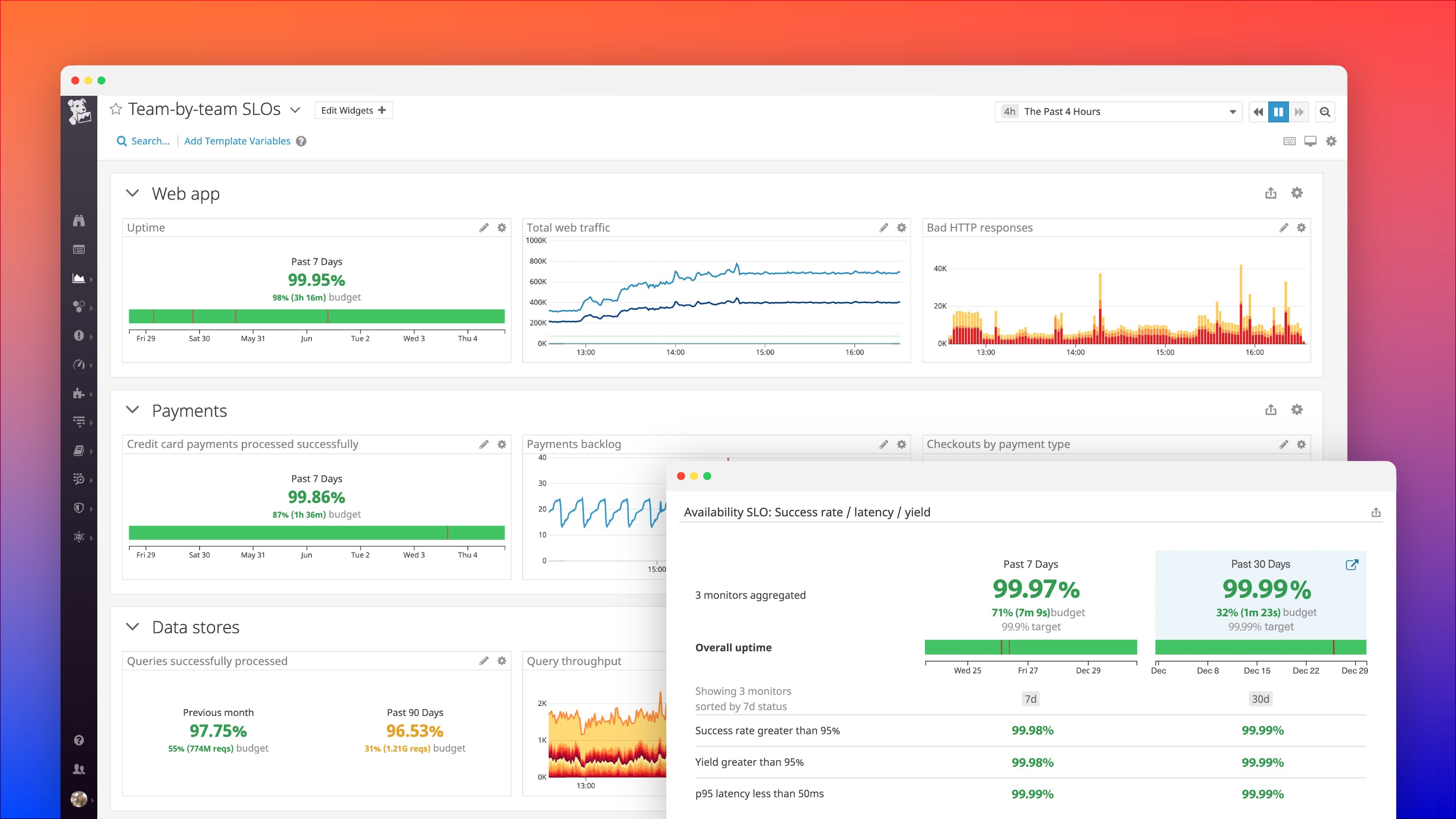
This cloud-based monitoring tool allows users to analyze the network’s performance and efficiency. It will enable you to check the status of all the connecting devices such as switches, routers, etc. Using this tool, you can also efficiently monitor the usage of cloud resources. You will get live network status, capture details about packets, and analyze the utilities consumed within a network.
This tool ensures that it will explore the complete network to identify the total number of new and old devices connected to the network. This type of exploration will lead to the creation of the inventory that is considered later for monitoring purposes. It comes with an intuitive dashboard that you can use to get an in-depth knowledge of every aspect of your network.
You can even check the network topology map that will keep changing as per the devices being added or removed from the network. You can click this map to get updated network status.
This exploration method will keep on running everything, thus updating the users with the correct information whenever they go through the dashboard and keep on updating the inventory. The dashboard will also display the historical analysis that will help the users analyze the traffic flow trend (bandwidth monitor) for a particular device. You can avail of its 14-days free trial.
Highlights
- This tool comes with an intuitive dashboard with which you can get along with the tool quickly.
- For analyzing the network, you do not have to spend extra costs for the deployment and onboarding of the servers.
- The network admins can use this tool for monitoring the network’s performance by working on in-depth insights into the network details.
- You will get to use its auto-discovery features to help create the network topology map to better understand the network.
- You will get access to make the desired network changes, which will be reflected in real-time.
- Also, the business can leverage this tool for scaling with its flexible pricing options.
Limitations
- You will get a short trial period that might be a smaller period for business to test their work.
3. ManageEngine OpManager (FREE TRIAL)
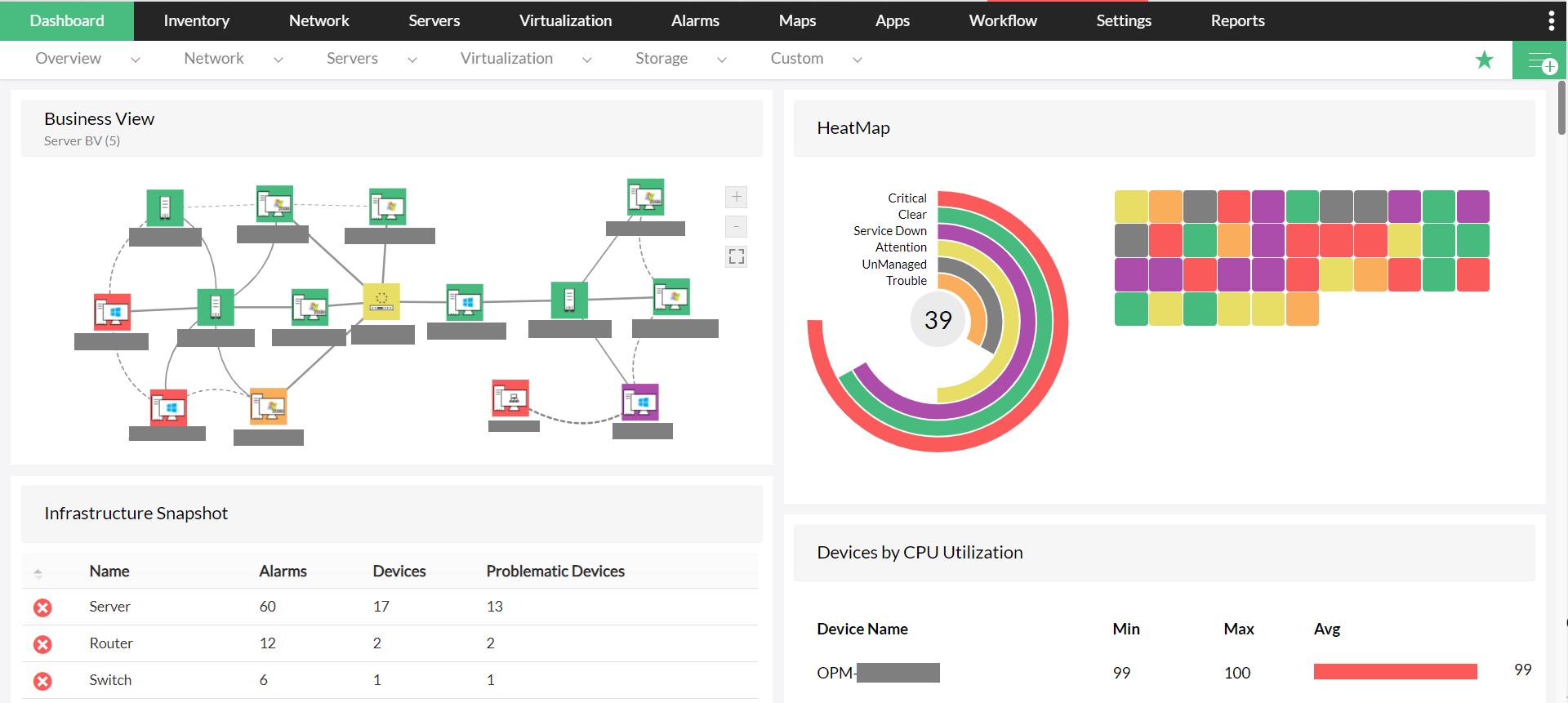
OpManager will not only help in checking the network’s performance but also the devices that are being connected to the network. This tool offers more than 200 widgets that allow the users to customize the dashboard to get another experience level. It is considered to be an all-rounder network monitoring tool that is suitable for small-scale as well as for large-scale businesses.
With OpManager, you can use the SNMP to get the updated network details. Its network mapping feature is out-of-the-box as it will help the users automatically detect the new devices added to the network for enhanced visibility. You will be able to schedule the network discovery process that will explore the network as per that schedule and inform the users about the newly added devices.
The alert system will respond instantly whenever a network changes or performance occurs. Even a simple company with a small infrastructure can use this tool. The basic plan will start at $245, which can support up to 10-1,000 devices. Its highest plan at $11,545 can support 250-10,000 devices on the network. You can use this tool for a 30-days free trial.
Highlights
- You can use its great dashboard that provides you with network performance reports with the help of its more than 200 widgets.
- You can avail of its auto-discovery features that allow you to explore networks and map new devices.
- You will get to leverage its alerting system, reducing the chances of false positives.
- You can send alert messages or notifications via SMS and other channels.
Limitations
- Some beginners may find it difficult to get along with this tool as it comes with a wide range of tools and widgets that can be tricky to use.
4. Site24x7 Network Monitoring (FREE TRIAL)
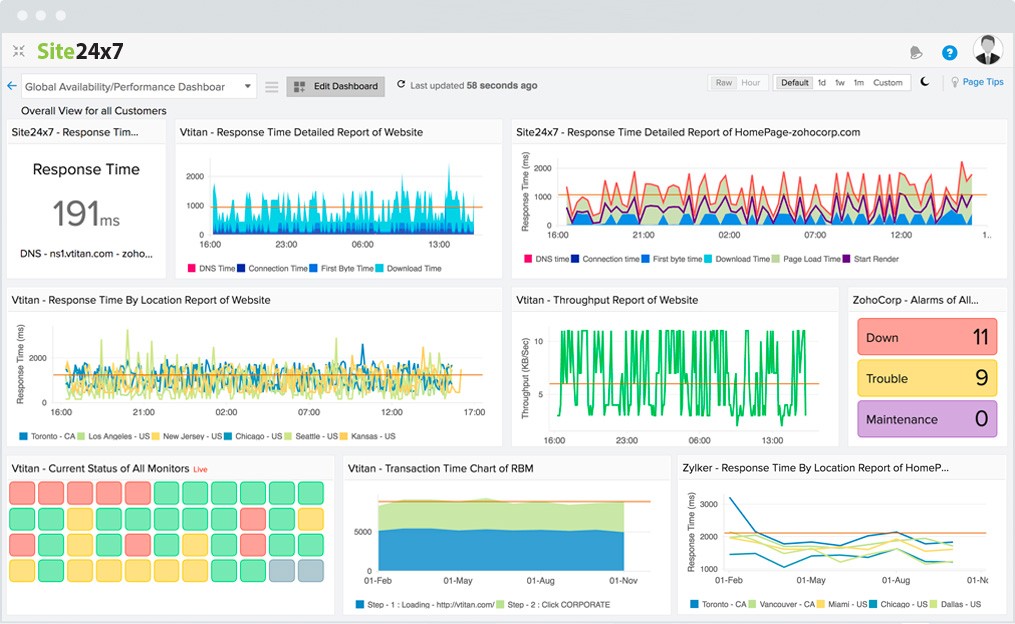
Site24x7 is capable of checking the performance of everything, such as applications, user behaviour, and the network. This tool will inform you whenever a new device is added to the network. Based on these results, the inventory will get updated and will be beneficial in creating the network topology map. The map and the inventory will automatically update with the network’s slight change.
This software uses the SNMP feature that will allow the auto-discovery to get the in-depth status of the network. You can even set alerts that will notify the desired teams about the criticality of the situation. These alerts will establish the severity of the situations and mark them accordingly. You can use its real user monitoring feature that will allow you to analyze the typical buyer journey.
Site24x7 is a free network monitoring tool, but along with the monitoring is limited to five websites or servers. If you want to go premium, you can avail of its other four paid plans that the user can customize per the business requirement. You can use its paid plans for a 30-day free trial.
Highlights
- This tool works on real-time data for exploring the devices and then creates charts, network maps, and whatever details are required to provide the accurate performance of the network.
- You can use its freeware version for testing purposes.
Limitations
- This tool might be a bit difficult to get along with if you are a beginner, as it is a tool with a wide range of features, and getting everything at once might be challenging.
5. Paessler PRTG Network Monitor (FREE TRIAL)
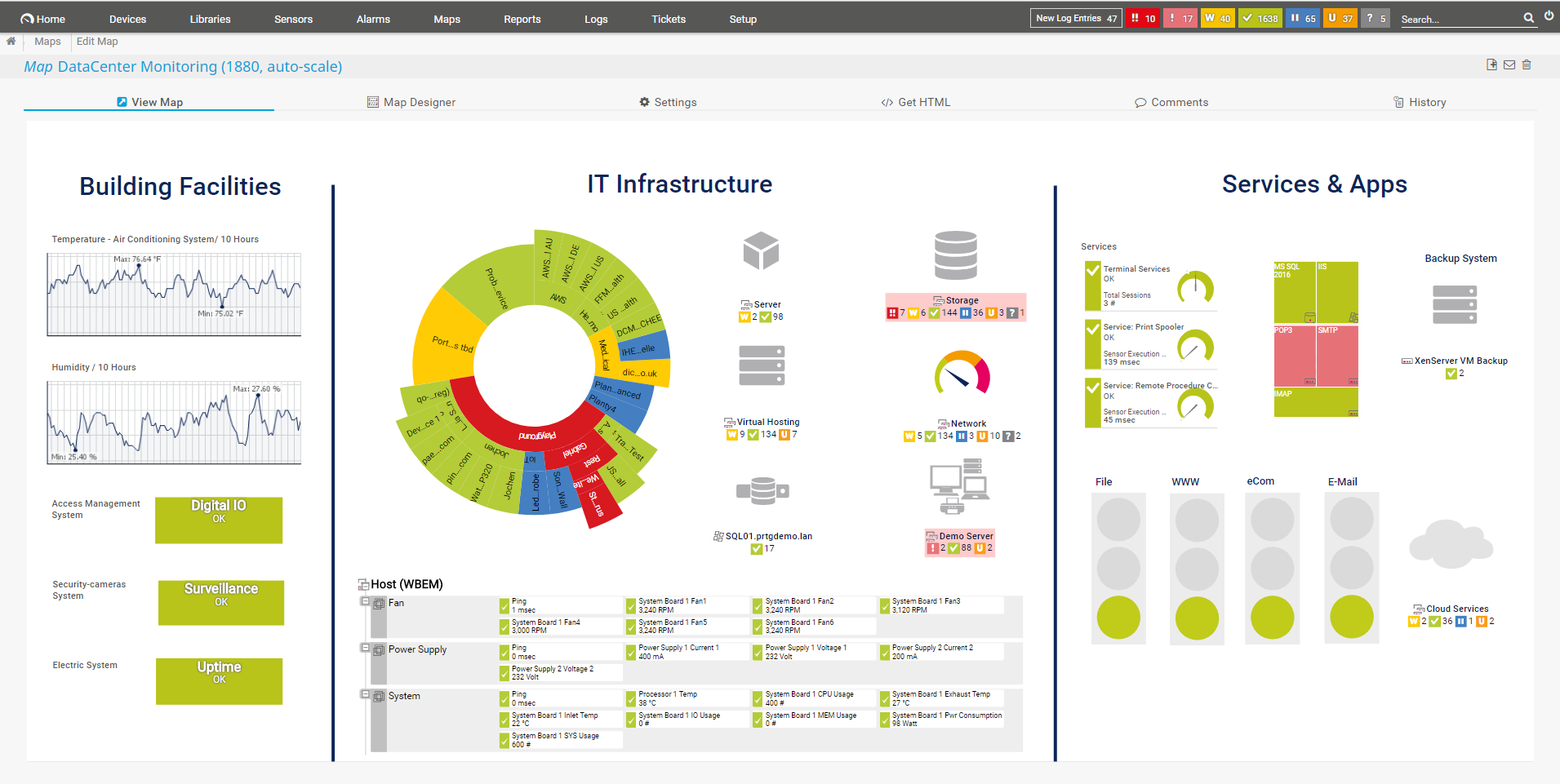
PRTG works efficiently based on the concepts of SNMP, packet sniffing, and WMI that are necessary for effectively monitoring the network and devices. The tool offers the scan network segment on its dashboard that will help the users for exploring and add the required devices to the network. Then, it would be best if you chose the range for each sensor to help monitor the network’s various segments.
You can customize the dashboard that will help in creating real-time network maps with the help of the drag and drop features by offering more than 300 map objects. PRTG monitoring provides a threshold-based alert system that will keep sending alerts whenever a change is beyond the set threshold. The notifications are being sent via SMS, emails, and other methods. Being a cost-effective solution, it is highly preferred among small-scale companies.
With PRTG free plan, you can leverage up to 100 sensors and need to pay to use more sensors. The paid version will start at $1600, which can provide the users with 500 sensors and one server installation. You can avail of its 30-day free trial for testing purposes.
Highlights
- Creating a detailed report uses SNMP, packet sniffing, and other features.
- If you are an administrator, you can use this tool to make changes to its dashboard.
- With its drag and drop feature, you can customize the views and reports to understand the network performance better.
- The alert system will send the notifications via SMS and emails whenever the set threshold value is breached.
- It comes with various sensors that are beneficial for analyzing specific applications running on the network.
- You can even use its freeware version for testing purposes.
Limitations
- You need to invest much time to get along with this tool as it has many features, and learning everything is challenging for beginners.
6. Nagios Core
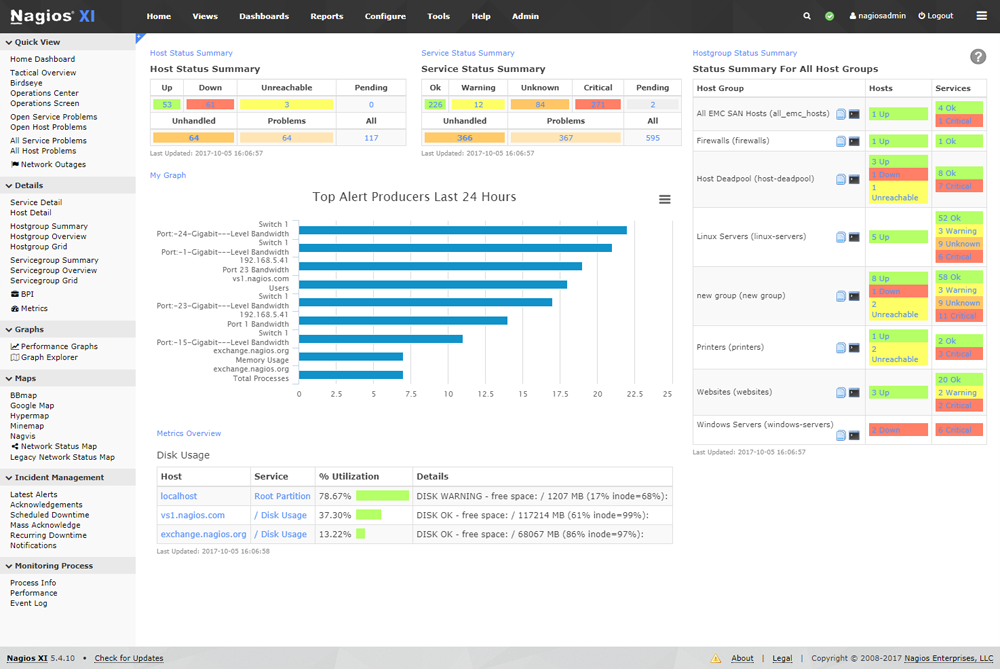
Nagios core is an open-source tool that allows you to monitor the network’s performance. You can use its alert system to notify the required team about any minor changes within the network, such as adding or removing the devices.
This tool will show you alert history details for more clear debugging as the history will tell you what type of action you have performed for a specific alert. It displays the warnings in a different colour to specify the severity of the generated alerts. This will help the team prioritize the issues and start working accordingly.
It offers various APIs that you can seamlessly integrate with other network services to add more functionalities to this tool. You can even add the desired plugins freely available on the Nagios exchange. Suppose you want to monitor the SNMP load or the CPU load usage, then you can add the SNMP CPU load plugin to this tool. You can use this tool for free, requiring some manual work to set up this tool.
Highlights
- It is a transparent tool with an immense variety of plugins.
- This tool comes with a variety of network-related information that will help you get into the insights of the network.
- This tool comes with a flexible notification system to send messages via SMS, email, etc.
Limitations
- Being open-source, it still lacks consistent support for its paid products
- You need technical knowledge as setting up this tool may require those skills.
7. Zabbix
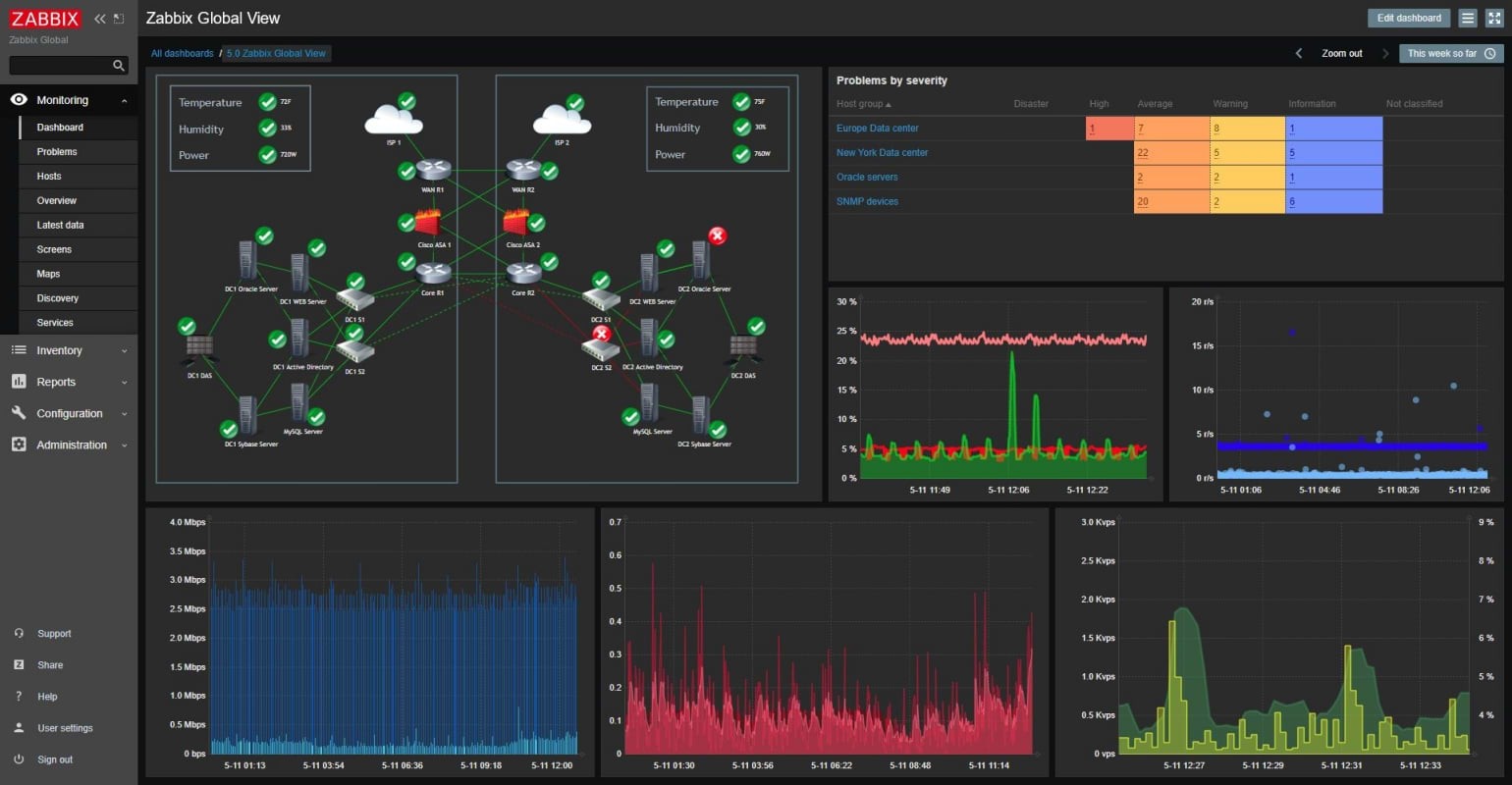
Zabbix combines the network, server, cloud, application, and other services used for closely monitoring the network. It allows SNMP and IPMP to analyze the network’s performance. You can use its auto-discovery feature that will help in detecting the devices automatically and update you about the slightest change in the network.
You can use one of the network monitoring templates that will help you configure the monitoring programs. It comes with various pre-configured templates that have been widely used by major companies like Cisco, HP, Dell, and others. It offers you an amazing alert system that will warn the users if there is something significant that needs your attention towards the network. You can avail this tool for free.
Highlights
- It is another tool that is available as an open-source.
- It offers both SNMP and IPMP that will help enhance the monitoring range.
- This tool will help you automatically detect any change in the network and configurations.
- You can use one of its flexible templates to get better and in-depth insights.
- It ensures instant and accurate notifications via SMS, email, and others.
Limitations
- You might not enjoy its interface as it is not as an interactive and intuitive interface as compared to other alternatives such as DataDog or Site24x7.
- It lacks some significant features, such as alerting features for reducing false positives.
Conclusion
Most IT companies emphasize combining various functionalities such as server functions, application storage, and network management as they are all independent identities and ensure that a high-end product is delivered to the customers. It is only possible if you have good network monitoring software that will help cover all these elements. A network monitoring tool might look like a small utility but is beneficial for getting the entire company’s infrastructure network’s detail to keep track of its performance.
Thus, for closely monitoring the performance of all the connected devices to the network and network itself, you should have an all-rounder network monitoring tool that will suit all your network-related needs. In his article, we have gathered some of the widely adapted network monitoring tools and software that will help the users get a complete insight into your network’s performance and notify you of the necessary changes in the network topology.
You can opt for any network monitoring tools or software and integrate them seamlessly within your organization for optimal results. For businesses looking to enhance their server performance and reliability, choosing a Windows dedicated server can be a game-changer. It offers the flexibility and control needed to tailor your network monitoring and management processes to your specific needs, ensuring a robust and secure infrastructure.
People also look at:
